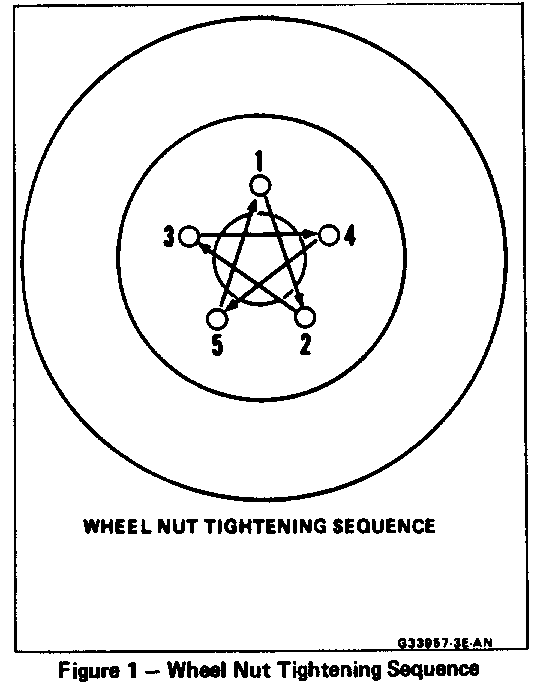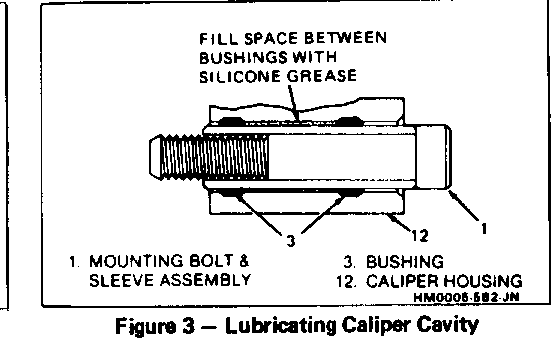BRAKE PULSATION SERVICE INFORMATION

SUBJECT: BRAKE PULSATIONS
VEHICLES AFFECTED: ALL PASSENGER CARS AND LIGHT DUTY TRUCKS
On today's vehicles the primary reason for brake pulsation is variation in the thickness of the rotor, which generally occurs after some mileage.
The causes of rotor thickness variation tend to occur while the vehicle is in motion and the brake pedal is in the unapplied position. Three events must occur simultaneously:
1. The rotor/bearing system runout must be out of specification enough to produce high spots on the rotor face in relation to the caliper.
2. There must be a condition of caliper drag which causes the inboard and/or outboard shoe to rub on the rotor high spots.
3. The lining material must be sufficiently abrasive to cause wear on the high spots and therefore to develop rotor thickness variation after accumulated mileage.
Following is a discussion of each of these events along with information about the conditions which can contribute to each:
SYSTEM RUNOUT:
Excessive system runout can exist as a result of the stack up of the tolerances of a rotor and a bearing which has been manufacturered at one end or the other of their respective design specifications, or if either the rotor or bearing are out of specification.
The manufacturing process controls which determine the amount of rotor or bearing runout are continuously being improved to reduce the amount of system and/or component runout. During manufacturing of the brake rotor, tolerances of the braking surfaces for flatness, thickness variation and lateral runout are held very close. Maintaining these close tolerances on the rotor's braking surface is necessary to prevent brake roughness. A lateral runout check of the rotor must be performed to determine the extent of runout.
Lateral Runout Check:
1. Remove the wheel and tire. Invert the-wheel nuts and reinstall them on the studs to the specified torque. Be sure to follow the alternating nut torquing sequence to ensure proper rotor alignment.
2. Fasten a dial indicator to the caliper so the dial indicator button contacts the rotor about 13mm (0.500 inch) from the outer edge.
3. Zero the dial indicator.
4. Move the rotor one complete revolution and observe total indicated runout (T.I.R.). Lateral runout cannot exceed 0.08mm (0.003-inch).
o On front wheel drive vehicles, excessive lateral runout of the rotor can often be improved by indexing the rotor on the hub one or two bolt positions from the original position. If the lateral runout CANNOT be corrected by indexing the rotor, check the hub and bearing assembly for looseness.
NOTICE: Whenever the brake rotor has been separated from the wheel bearing flange, remove any rust or foreign material from the mating surfaces of the wheel bearing flange and rotor. Failure to do this may result in excessive lateral runout of the rotor, causing brake pedal pulsation.
5. If lateral runout exceeds that specified in Step 4, refinish the rotor to specifications, reinstall rotor, and remeasure lateral runout.
WHEEL BOLT TORQUE:
overtorqued wheel nuts or torquing wheel nuts without alternating the tightening sequence, especially on aluminum wheels, can also create a rotor runout condition. Refer to Figure 1.
The use of a torque wrench when tightening wheel nuts is necessary to prevent distortion of the rotor, hub or wheel.. The wheel nuts should be tightened in two steps to assure an even clamp load.
CALIPER DRAG:
Caliper drag is usually caused by interference between the caliper to knuckle interface or a caliper bolt binding on caliper to knuckle clearance is important. Clearance should be checked with the caliper in position and the caliper mounting bolts properly torqued. If excessive clearance exists, a clunking noise may occur on each brake apply. Too little clearance can cause caliper drag. The desired clearance is .127-.305mm(.005"-.012") at each caliper to knuckle bracket interface, or a total of .245-.305mm(.010"-.024"). The caliper bracket stops can be filed to obtain proper clearance. Refer to Figure 2.
When servicing the caliper, the caliper bolts should be cleaned and the space between the caliper bolt bushings should be filled with silicone grease such as Part Number 992887 or equivalent. This will prevent the caliper dragging or binding on the mounting bolts. Refer to Figure 3.
LINING MATERIAL ABRASIVENESS:
The degree of abrasiveness of the brake lining material is determined by the manufacturer. A highly abrasive material will tend to create a rotor out-of-parallel condition if system runout and caliper drag are present.
The properties and characteristics of brake linings are specified by Product Engineering. Some brake lining designs may be more aggressive when stopping, i.e. higher friction coefficient, while others are less aggressive but may be very durable and long lasting. The linings for any specific vehicle are selected on the basis of friction, wear, etc., to optimize front and rear braking for that specific vehicle.
The brake lining used should be whatever is recommended by the manufacturer in the parts catalog or in the latest service bulletin.
Brake pedal pulsation can also occur in the rear on drum brakes if there is radial runout in the drum and/or axle flange, or bearing.
Thickness Variation Check:
If a brake pedal pulsation condition is felt, a thickness variation check should be performed on the rotor.
Thickness variation can be checked by measuring the thickness of the rotor at four or more points around the circumference of the rotor. Use a micrometer calibrated in one tenth increments per .001 inch. All measurements must be made at the same distance in, from the edge of the rotor. A rotor that varies by more than 0.013mm (0.0005-inch) can cause pedal pulsation and/or front end vibration during brake applications. A rotor that does not meet these specifications should be refinished or replaced as necessary.
Rotor Refinish Recommendations:
See Product Service Bulletin 88-5-118



General Motors bulletins are intended for use by professional technicians, not a "do-it-yourselfer". They are written to inform those technicians of conditions that may occur on some vehicles, or to provide information that could assist in the proper service of a vehicle. Properly trained technicians have the equipment, tools, safety instructions and know-how to do a job properly and safely. If a condition is described, do not assume that the bulletin applies to your vehicle, or that your vehicle will have that condition. See a General Motors dealer servicing your brand of General Motors vehicle for information on whether your vehicle may benefit from the information.
